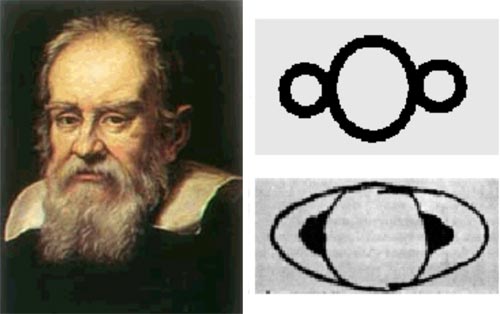ansa

Galileo was the first to observe Saturn with a telescope in 1610. Because of the crudeness of his telescope, he couldn't determine what the rings were. He incorrectly guessed that there were two large moons on either side of Saturn. Two years later when he viewed Saturn again, the "moons" had disappeared. We know now this is because Galileo was viewing the rings edge-on so that they were invisible, but at the time it was confusing to him. After another two years, Galileo viewed Saturn again and found that the "moons" had returned. He concluded that the rings were "arms" of some sort.
1. In planetary astronomy, an ansa is a portion of a ring that appears farthest from the disk of a ringed planet in an image.
2. In the case of galaxies, an ansa is one of the extremities of a lenticular
galaxy.
The word comes from the Latin for "handle," since the earliest views of Saturn's rings suggested that the planet had two handles extending on either side. The plural is ansae.


